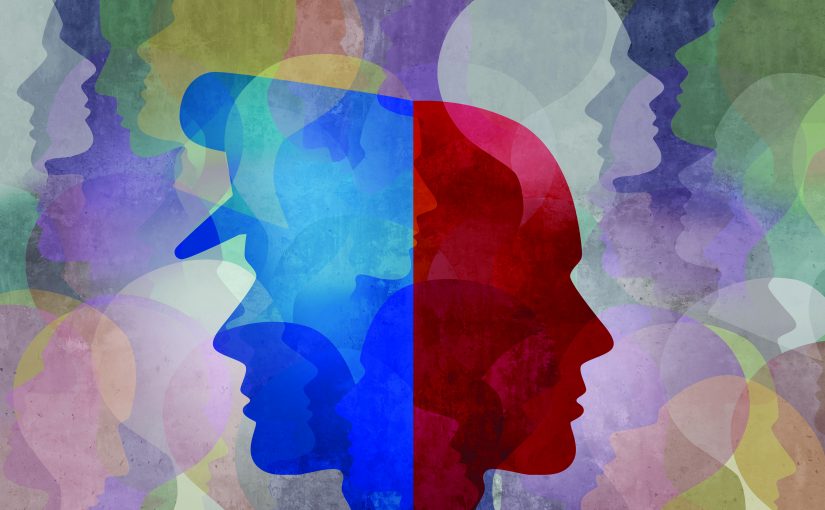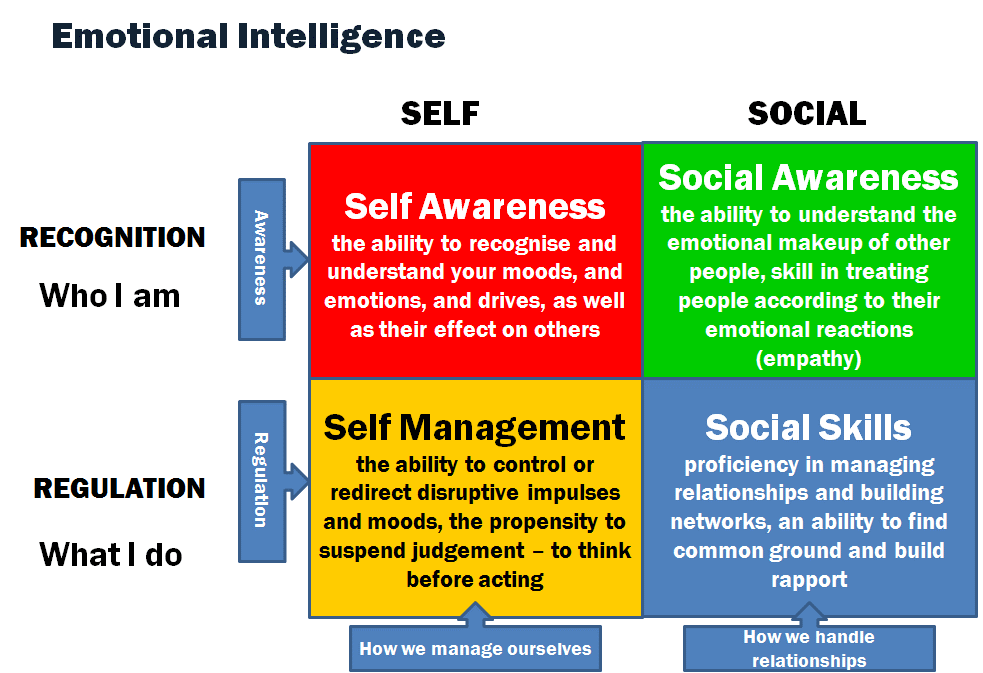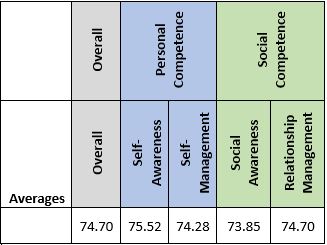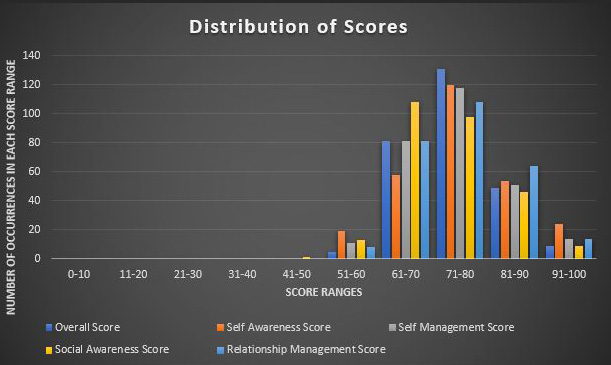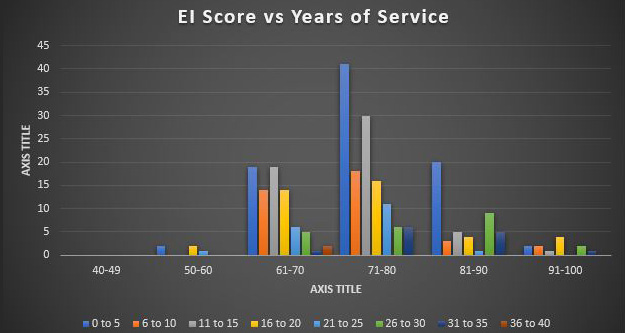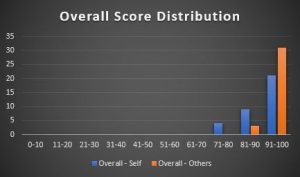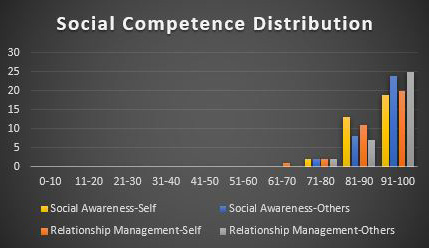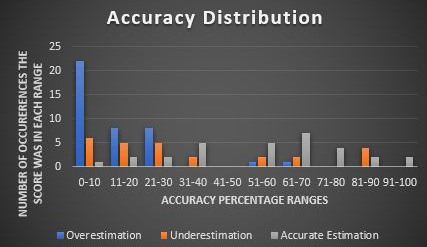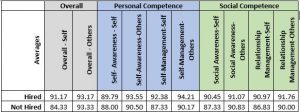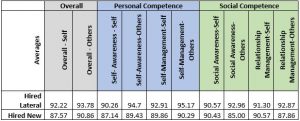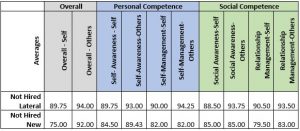The way police officers deliver their services and the experiences of their professional lives are directly affected by the quality of police leadership.1 Line officers use leadership skills every day. Police officers are responsible for the process and outcome of investigations—and managing process and outcome is the expression of situational leadership skills.2 The development of police leadership skills cannot start at the beginning of their first day as a supervisor but must start on an officer’s first day of the academy. The development of the police leaders of tomorrow must start earlier in their careers. The screening manner for potential police officers should be continually improved to maximize the leadership potential of the profession for the future.
|
This enhanced screening should include an evaluation/investigation of an applicant’s human skills, which include emotional intelligence and social intelligence portions in. Professor James G. Clawson defines emotional intelligence as the ability to recognize one’s own emotions, manage those emotions, and control oneself.3 Social intelligence is defined as the ability to recognize emotions in others, listen, care about others’ emotional state, and help others gain control and manage their emotions. In the book Emotional Intelligence 2.0, the authors combine the ideas of emotional and social intelligences into the model presented in Figure 1.4
As part of the hiring process, leadership skills in applicants should be identified. Education and experience over a career can develop leadership skills.5
According to improvement and operations management specialist Donna Sherriff, leadership skills can be learned, and there are three types of leadership skills—human, technical and conceptual.6 Technical skills are methods and techniques associated with a profession; human skills reflect a capacity to work effectively in an organization; and conceptual skills imply the ability to generate, consider and use ideas as in problem solving. This can be a framework for evaluating potential new police officers. The technical, human, and conceptual skills of applicants could be evaluated as part of the hiring process.
The Irving, Texas, Police Department’s hiring process begins with a written test to evaluate minimum standards regarding one’s ability to learn technical components and conceptual thinking skills. It then progresses to the physical fitness evaluation. After completion of these components, the background investigation is completed. During the background investigation, the humanistic side is evaluated. As part of the background investigation, an emotional intelligence test is given to further investigate emotional and social intelligences.
Humanistic skills are pervasive in police work. Community policing has been defined as a “collaboration between the police and the community that identifies and solves community problems.”7 It has also been defined as a “philosophy that promotes organizational strategies, which support the systemic use of partnerships and problem-solving techniques, to proactively address the immediate conditions that give rise to public safety issues such as crime, social disorder, and fear of crime.”8 As these two examples demonstrate, community policing is a very complex idea that almost defies clear definition; nonetheless, it is in use in most policing agencies around the United States in some form. A common idea in both definitions is the idea of relationship development—a major aspect of human leadership skills. A team of psychologists has defined social intelligence as (1) the ability to perceive others’ needs and problems and (2) the ability to respond and adapt to different environments.9 Social intelligence is a primary skill associated with the development of community policing.
According to Emotional Intelligence 2.0, emotional intelligence skills pair up two primary competencies: personal competence and social competence. Personal competence is made up of self-awareness and self-management.10
Self-awareness is the ability to accurately perceive one’s own emotions in the moment and understand one’s tendencies across situations. The only way for a person to genuinely understand his or her emotions is to spend enough time thinking through them to figure out where they came from and why they are there.
Self-management is a person’s ability to use his or her awareness of emotions to stay flexible and direct his or her behavior positively. Real results come from putting one’s momentary needs on hold to pursue larger, more important goals.11
Social awareness is the ability to accurately pick up on emotions in other people and understand what is really going on with them. Listening and observing are the most important elements of social awareness.12
Relationship management taps into abilities in the first three emotion intelligence skills. It is the ability to use awareness of one’s own emotions and those of others to manage interactions successfully. It ensures clear communication and effective handling of conflict. It seeks benefits from every relationship.13 The common thread in the community policing ideal is the use of the relationship management skill.
Using emotional and social intelligence testing as part of the hiring process of police officers would allow an agency to evaluate a candidate’s technical, conceptual, and humanistic fitness for a job in municipal policing.
Over the last year, the Emotional Intelligence Appraisal exam by Talent Smart, Inc., was given to 273 police officers in the Irving Police Department. The results provide an emotional intelligence or “EQ” score baseline of the sworn employees of the Irving Police Department. EQ competencies and strategies (actions taken when responding to emotional stress) with the lowest scores were identified to predict what skills would need to be developed the most in the new police officers.
“Social intelligence is a primary skill associated with the development of community policing.”
To evaluate potential new hires, a 360-degree evaluation of their emotional intelligence is completed as part of the hiring process during the background investigation. Each applicant takes the appraisal. Each of the applicant’s references rates the applicant’s emotional intelligence as well to provide a 360-degree evaluation. These results are used to determine the underestimated percentage of abilities, overestimated percentage of abilities, and accurate estimation of the applicant’s scores. This analysis uses the results from 35 potential sworn police employees. Of the 35 potential employees, 29 were hired. The information from the applicant’s background investigation, including the emotional intelligence appraisal, is given to a board composed of five police officers of various ranks who advise the chief of police on a hire or don’t hire decision. The information also helps the board compose questions for an extensive oral interview. It is important to note that there is not a baseline EQ score necessary to be hired and that the score is not used as a sole decision to hire or not. The testing is used to identify possible questions within the oral interview board as well as be used for a confirmation test for the background investigator’s opinions of perceived strengths and weaknesses. Because of the cost involved in 360-degree testing, the appraisals are only given to applicants in the final portion of their background investigations and not to every applicant.
Irving Police Department Current Employee Data
Figures 2–5 show the results of the EQ appraisals performed on current Irving employees overall, as well as score distributions by age and years of service.
|
Figure 2: Overall EQ Scores of Officers |
Figure 4: Officer Score Distribution by Age
|
||||
|
|
Lowest Scoring Skill Identification and Frequency
The three lowest scoring EQ strategies were identified in each Irving police officer and the number of occurrences each strategy was identified in each person that took the emotional intelligence test.
| Figure 6: EQ IPD Officer Strategies |
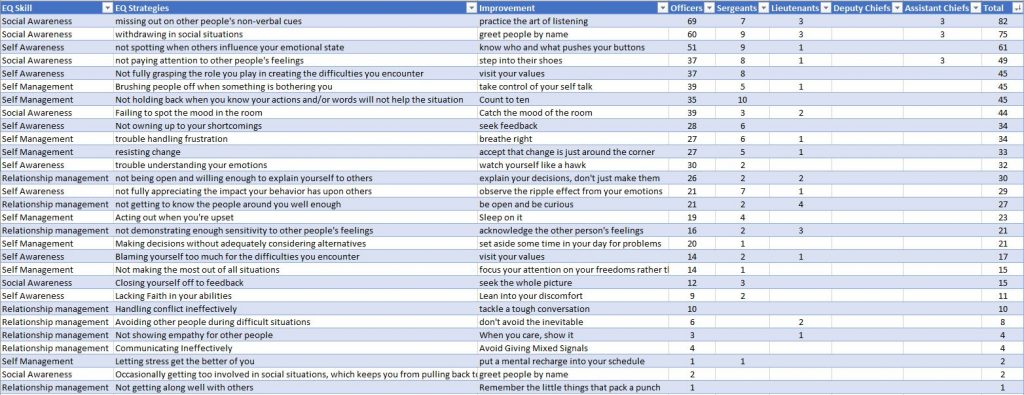 |
Observations of Irving Officer Data
According to Emotional Intelligence 2.0, the research shows that men generally outperform women in each of the emotional intelligence skills except social awareness.14 The data from testing officers at the Irving Police Department support this finding.
The research also shows an increase in average emotional intelligence scores as rank increases, except for executive positions which will show a decreased emotional intelligence overall score.15 The data gathered from testing the Irving Police Department are consistent with this finding as well. The executive rank, assistant chief, shows a decreased overall emotional intelligence score, as compared to the ascending scores from the rank of police officer to deputy chief. However, the sample size for deputy chief and assistant chief ranks is small. Age and years of experience as a police officer have similar score distribution curves.
Social awareness strategies were identified as areas for improvement for the Irving Police Department. Since men generally score lower in this area than women, the department’s overall performance in this capacity could be improved by hiring a higher percentage of women for sworn positions. .
Comparison with Law Enforcement Emotional Intelligence Worldwide
| Figure 7: Comparison of Irving Police Department and Law Enforcement Worldwide |
 |
The researchers at the testing firm provided current statistics from their database. Between July 2021 and December 2021, 2,425 individuals who self-identified as “Law Enforcement/Security” took the test. The group’s overall scores are shown in Figure 7, alongside Irving Police Department’s scores.16
The statistics from Irving Officer testing are consistent with the worldwide law enforcement EI scores. Overall, 2020 and 2021 testing data from 97,452 participants from all fields reveal an overall EI score of 75 and all the competency scores of 75 as well, demonstrating that police officer data are not significantly different from the general population emotional intelligence scoring.
Irving Potential Employees Data
Thirty-three potential Irving Police Department employees completed the 360-degree emotional intelligence evaluation; six of those potential employees were not hired by the department. In Figures 8–19, the term “Self” refers to the average scores for each of the police officer candidates. The term “others” is the average score from their 360-degree evaluation.
|
Figure 8: Average for Potential Employee Scores
|
Figure 9: Accuracy of Scores for Potential Employees
|
|
Figure 10: Potential Employee Overall Score Distribution |
Figure 11: Potential Employee Personal Competence Score Distribution |
|
Figure 12: Potential Employee Social Competence Score Distribution |
Figure 13: Accuracy of Score Distribution for Potential Employees |
|
Figure 14: Average Scores for Hired/Not Hired Potential Employees |
Fig 15: Accuracy of Scores for Hired/Not Hired Potential Employees |
|
Figure 16: Average Scores for New/Lateral Hires |
Figure 17: Accuracy of Scores for New/Lateral Hires |
|
Figure 18: Average Scores for New and Lateral Not Hired |
Figure 19: Accuracy of Scores for New and Lateral Not Hired |
Potential Employee EQ Strategy Weaknesses
Figure 20 is a representation of the frequency that each of the EQ abilities ranked in the applicant’s bottom three skills. These indicate a trend for challenges for the average applicant.
| Figure 20: EQ Strategies of Applicants |
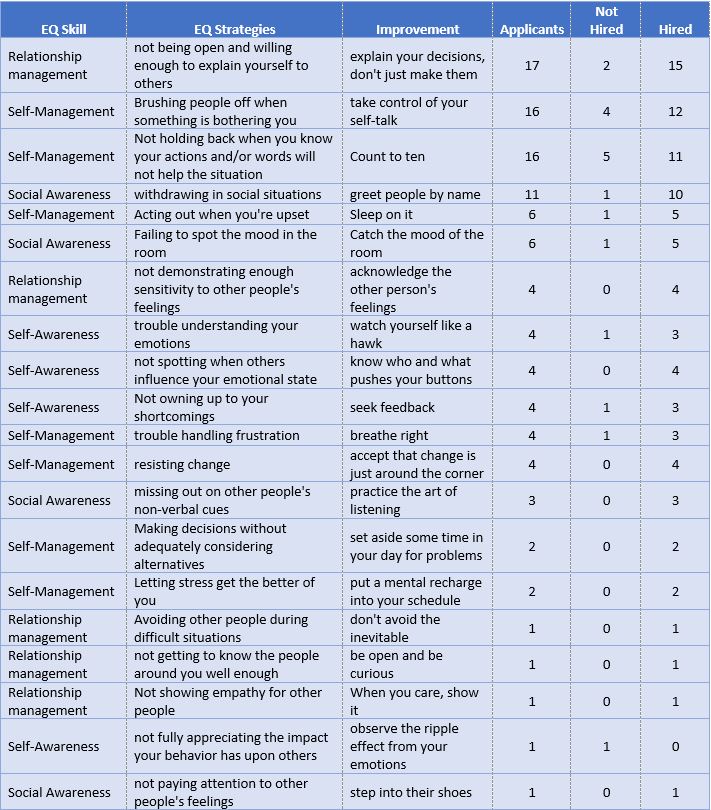 |
Observations About New Hire Testing Data
If the average emotional intelligence scores of the new hires are adjusted using the average overestimation percentage, the resulting scores are within 3 percentage points of the average emotional intelligence scores of the sworn police officers. The average new hire emotional intelligence score is around 3 percentage points higher than the current departmental average. With the overall percentage being only 3 percent different, it is important to focus on what the EQ evaluation identifies as strengths and weaknesses. Developing questions for the potential hire should focus on trends being observed and not overall scores as benchmarks.
“Academies should emphasize self-management development skills training as part of an overall education to emotional intelligence development.”
There is a marked difference between candidates who were hired versus candidates who were not hired. Overall, candidates who were not hired had competence scores that were 3 percent lower than candidates who were hired. Candidates who were not hired had very high underestimation percentages and lower accurate estimation percentages. However, there is a notable underestimation of abilities from new officers, as well. This highlights the differences in age, experience, and training of police officers. The sample size of candidates that were not hired is low and therefore it is difficult to develop an evidence base for what emotional intelligence issues play a role in different policing situations. The one observation of a very high underestimation of self-reported emotional intelligence abilities could be a sign of a decreased self-awareness and therefore decreased self-confidence in their abilities. A follow-up study of testing at the time of hire, completion of a police academy, and completion of field training could measure the effectiveness of development of the humanistic components of leadership development within the police training process.
There was a correlation noted between the EQ strategies in the category of self-management of “Can be counted on” and “Resist the desire to act or speak when it will not help the situation” or “Brush people off when something is bothering you.” All but four of the new hires had the EQ strategy of “Can be counted on” as one of the top three scoring EQ strategies. Only two of the new hires that had that strategy did not have EQ strategies of “Resist the desire to act or speak when it will not help the situation” or “Brush people off when something is bothering you” as one of the lowest scoring EQ strategies. The self-management scores in the new hires were the highest scoring competence skills overall. This indicates that there is more of a separation between high and low score strategies within the self-management competence. This would indicate that basic academies should emphasize self-management development skills training as part of an overall education to emotional intelligence development.
The one EQ strategy that was the most frequent lowest scoring in people not hired was “Resisting the desire to act or speak when something is bothering you. It was low scoring in 83 percent of the people not hired. This strategy was one of the three lowest scores present in 33 percent of people hired. The strategy “brush people off when something is bothering you” was present in 50 percent of the people hired.
Case Study 1: A male in his mid-20s applied for the position of police officer. He has some experience working in a jail. The panel developed questions specific to self-esteem and self-confidence based upon the background investigation and EQ testing. The board rejected the applicant after the oral board interview. The panelists were interviewed and determined that the applicant could not deal with stress adequately and did not have the confidence to make split-second decisions for dynamic problem solving. His EQ testing indicated he rated his emotional and social intelligences much lower than his references. He had an 89 percent underestimation score. A possible interpretation of the EQ testing would indicate self-confidence and self-assessment difficulties.
Case Study 2: A female in her mid-20s applied for the position of police officer. She did not have any experience in law enforcement. The panel developed questions based upon the background investigation. The board accepted the applicant. However, the applicant was unable to fulfill her conditional offer of employment due to not passing the psychological testing. The psychologist opined she could not deal with the stress of dynamic decision making and had self-confidence issues. Her EQ testing indicated she rated her emotional and social intelligences much lower than her references. She had an 86 percent underestimation score. A possible interpretation of the EQ testing would indicate self-confidence and self-assessment difficulties.
The two case studies demonstrate a hindsight perspective of two similar cases with EQ testing. However, the difference was that, in the second case study, the process of using emotional intelligence was new for the board members and they were not aware of the potential of the EQ testing for question development.
Suggested EQ-Driven Questions for Oral Interviews
Using the emotional intelligence strategies suggested by Bradberry and Greaves in Emotional Intelligence 2.0, the following questions were created for the oral board to ask to help determine a potential employee’s skill depending upon the strengths and weaknesses of their EQ testing:
Self-Awareness:
- Do you know what pushes your buttons?
- (Ask after another oral board member goes through a police employment scenario.) You reacted to the last scenario by demonstrating (insert emotion observed). Why did you react in that manner?
- (Ask after going through a police employment scenario) Why did you choose (action chosen in scenario)?
- What things in your life do you value?
- How do you know you have a higher stress level in the moment?
Self-Management:
- What do you do to relieve stress in the moment? What things do you do in your life to relieve stress?
- Describe a scenario when you experienced a change in life. How did you react to that change?
- Who in your life has mentored you and what behaviors did you change as a result of their advice?
- What are your goals?
- Describe your process of problem solving.
Social Awareness:
- What is one of your favorite movie characters and what do you admire about that character?
- (Ask after going through a potential police scenario.) How do you think the victim of the crime in the previous scenario would describe their emotional reaction? What do you think the perpetrator of the crime’s motive for acting in the criminal manner was?
- What would a mentor say are your biggest strength and your biggest weakness? What actions have you demonstrated that would make them have these opinions?
Relationship Management (to be evaluated by interviewers during response to preceding questions):
- Is the potential employee communicating in a natural manner or does it seem forced?
- Is the potential employee’s words, actions, and body language consistent and aligned?
- Is the potential employee demonstrating appropriate emotions for the interview?
- Can the potential employee explain their choices in each of the potential police scenarios in a clear, logical manner?
- Is the employee able to discuss difficult topics or do they deflect from these issues?
Summary
The emotional intelligence evaluation is useful for hiring new police officers to evaluate humanistic aspects of the individual. It enables the oral board to develop customized questions for each potential employee to help determine a hire or do not hire recommendation for the chief of police. The EQ test scores alone cannot be used to compare to benchmark numbers; the test is a confirmatory evaluation for a thorough background investigation.
The emotional intelligence test is useful for self-assessment by the potential police employee. It will help them internalize some ideas for personal and professional skills development, including leadership skills. Specifically, it will give the employee personal insight for development of the humanistic skill aspect of leadership, which is also correlated with community policing. This insight will help them to develop professionally in the upcoming years as a police officer.
The emotional intelligence evaluation is also useful for the identification of one’s strengths and weaknesses to help the development of the police officer and departmental leader of tomorrow for basic police academy. The academy personnel can use the data to help develop the humanistic aspects of the leadership skills development in the learning process at the same time they are teaching the technical and conceptual skills. 🛡
Notes:
1Thomas E. Baker, Effective Police Leadership: Beyond Management (New York, NY: Looseleaf Law Publications, Inc., 2000).
2Janet Coble Vinzant and Lane Crothers, Street-Level Leadership: Discretion and Legitimacy in Front-Line Public Service (Washington, DC: Georgetown University Press, 1998).
3James G. Clawson, Level Three Leadership: Getting Below the Surface, 2nd Ed. (Upper Saddle River, NJ: Prentice Hall. 2003).
4Travis Bradberry and Jean Greaves, Emotional Intelligence 2.0 (San Diego, CA: TalentSmart, 2009).
5Mark D. Mumford et al., “Leadership Skills: Conclusions and Future Directions,” The Leadership Quarterly 11, no. 1 (Spring 2000): 155–170.
6D.R. Sherriff, “Leadership Skills and Executive Development: Leadership Mythology vs. Six Learnable Skills,” Training and Development Journal 22, no. 4 (1968): 29–34.
7Community Policing Consortium, Understanding Community Oriented Policing: A Framework for Action (Washington, DC: Bureau of Justice Assistance, 1994).
8Office of Community Oriented Policing Services (COPS Office), Community Policing Defined (Washington, DC: COPS Office, 2014).
9Lisa M. Kobe, Roni Reiter-Palmon, and Jon D. Rickers, “Self-Reported Leadership Experiences in Relation to Inventoried Social and Emotional Intelligence,” Current Psychology 20, no. 2 (Summer 2001): 154–163.
10Bradberry and Greaves, Emotional Intelligence 2.0.
11Bradberry and Greaves, Emotional Intelligence 2.0.
12Bradberry and Greaves, Emotional Intelligence 2.0.
13Bradberry and Greaves, Emotional Intelligence 2.0.
14Bradberry and Greaves, Emotional Intelligence 2.0.
15Bradberry and Greaves, Emotional Intelligence 2.0.
16TalentSmartEQ, Current Law-Enforcement Statistics, 2021.
Please cite as
James Beyer, “Hiring Police Officers Using Emotional Intelligence Skill Evaluation,” Police Chief Online, December 21, 2022.


